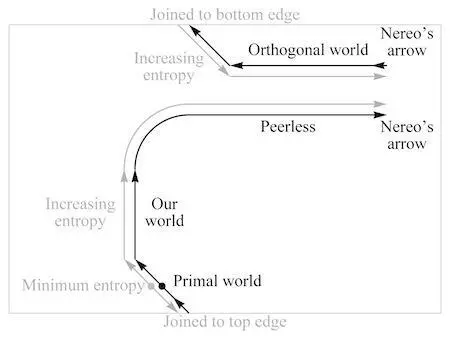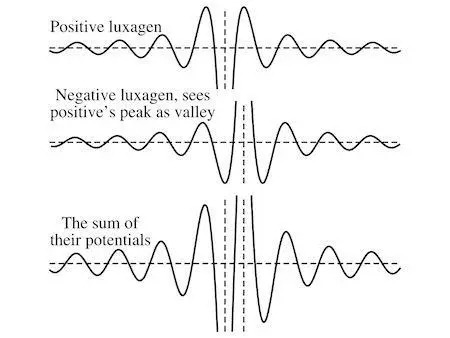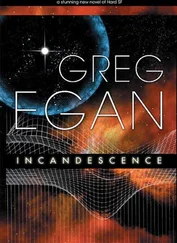Greg Egan - The Clockwork Rocket
Здесь есть возможность читать онлайн «Greg Egan - The Clockwork Rocket» весь текст электронной книги совершенно бесплатно (целиком полную версию без сокращений). В некоторых случаях можно слушать аудио, скачать через торрент в формате fb2 и присутствует краткое содержание. Жанр: Фантастика и фэнтези, на английском языке. Описание произведения, (предисловие) а так же отзывы посетителей доступны на портале библиотеки ЛибКат.
- Название:The Clockwork Rocket
- Автор:
- Жанр:
- Год:неизвестен
- ISBN:нет данных
- Рейтинг книги:3 / 5. Голосов: 1
-
Избранное:Добавить в избранное
- Отзывы:
-
Ваша оценка:
- 60
- 1
- 2
- 3
- 4
- 5
The Clockwork Rocket: краткое содержание, описание и аннотация
Предлагаем к чтению аннотацию, описание, краткое содержание или предисловие (зависит от того, что написал сам автор книги «The Clockwork Rocket»). Если вы не нашли необходимую информацию о книге — напишите в комментариях, мы постараемся отыскать её.
The Clockwork Rocket — читать онлайн бесплатно полную книгу (весь текст) целиком
Ниже представлен текст книги, разбитый по страницам. Система сохранения места последней прочитанной страницы, позволяет с удобством читать онлайн бесплатно книгу «The Clockwork Rocket», без необходимости каждый раз заново искать на чём Вы остановились. Поставьте закладку, и сможете в любой момент перейти на страницу, на которой закончили чтение.
Интервал:
Закладка:
“Right,” Yalda said. “The more luxagens you have, as long they’re sitting in each other’s pits or valleys, the potential just keeps adding up: all the valleys become deeper and all the peaks get higher. So eventually the pit would become inaccessible, because it’s surrounded by insurmountable peaks.”
Fatima said, “So that keeps all the luxagens from falling together completely, and the rest just end up in each other’s valleys rather than each other’s pits?”
“Go on,” Yalda pressed her.
“I suppose they’d roll around in the valleys too, just like they orbit around the pits,” Fatima mused.
“And if they roll fast enough in the valleys,” Giocondo added, “they’d be stable there too. They wouldn’t emit light and end up tearing the solid apart.”
Yalda was delighted. “Bravo, everyone! A few lapses into the class, and we have solids rendered almost solid again.”
Ausilia said, “Almost? What’s the catch?”
“The idea that Giocondo raised is very appealing,” Yalda said, “and as far as our measurements can guide us, it seems to be true. The energy pits and valleys in real solids seem to be shaped in such a way that the natural frequencies of motion for the luxagens are greater than the maximum frequency of light.
“The only trouble is: if a luxagen isn’t going to make any light at all , there can’t be any wobbles to its orbit in the pit, or its rolling around in the valley. If there was even the tiniest imperfection in its motion that progressed at a sufficiently low frequency, then that would start to generate light.”
“Which would make the imperfection stronger,” Ausilia realized. “So it would lose true energy faster, grow stronger even faster… and the whole thing would get out of control.”
Yalda said, “Exactly. And the thing is, the shape of the potential energy that we get from Nereo’s equation doesn’t allow for perfect orbits, or perfect rolling in the valleys. The main cycle can have a high enough frequency to avoid creating light, but the potential has built-in flaws that guarantee that there’ll be lower-frequency motion as well. It seems to be unavoidable.”
“But solids don’t blow themselves apart,” Fatima proclaimed irritably. “Not without a liberator.”
“Of course,” Yalda said. “So although we seem to have most of the story, although it almost adds up… there must be something we’re missing, something that nobody yet understands.”
She let them ponder that for a moment, but then moved on swiftly. Being told that you’d reached the point where you could only make progress by breaking new ground was a daunting thing to hear for the first time.
“The second mystery,” Yalda continued, “is the structure of particles of gas. There are plenty of symmetrical polyhedrons where putting a luxagen at every vertex gives you a mechanically stable configuration—which seems to make them good candidates for the little balls of matter of which we expect a gas to be comprised. But those polyhedrons share the problem solids have: the luxagens rolling in their energy valleys will always have some low frequency components to their motion, so they ought to give off light and blow the whole structure apart.
“There’s another problem as well, though: tiny, pure fragments of solids are sticky, as Sabino’s experiments have shown. But the gases that make up air don’t seem to be sticky at all; it’s as if the field around them has somehow canceled out, almost completely.
“A young friend of mine back home, Valeria, showed that a spherical shell of luxagens of the right size would have no external field, so you might think that a polyhedron of a similar size could get close to that perfect cancellation. The trouble is, the need for mechanical stability gives you one size for the polyhedron, and the need to cancel the external field gives you a different size. It seems to be impossible to meet both criteria at once.”
Some of the students were beginning to look dismayed. Proving the mechanical stability of an icosahedron built out of luxagens had not been an easy exercise, and now they had to accept that all that hard work had been nothing but the first step into a larger, unknown territory.
“The third mystery,” Yalda said, “is the strangest, and the most dangerous. The Peerless is surrounded by fine dust that we believe is the same kind of material that we saw back home as Hurtlers, when it burned up in the solar wind at close to infinite velocity. But we’ve more or less matched its velocity now… so why should it behave any differently toward us than any other dust?”
Tamara, another near-stranger to Yalda, had heard the theory that had begun circulating a few days after the news that the spin of the Peerless had stopped the impact flashes. “The luxagens are swapped,” she said. “Any that would be positive in our own materials will be negative for that dust, and vice versa.”
“Can you say why?” Yalda pressed her.
“It’s come to us… around the cosmos,” Tamara struggled, tracing out a loop with one hand.
“And why does that matter?” Yalda persisted. “How does that swap the luxagens?”
“I don’t know,” Tamara confessed.
Yalda sketched out the general idea.

She said, “Suppose the orthogonal stars, the orthogonal worlds, are fragments that broke off the primal world backward . They’ve come full circle around the cosmos, and we’re moving alongside them with our arrows of increasing entropy in agreement. We know that those arrows agree, because otherwise the orthogonal stars would be invisible to us.
“But Nereo’s equation ties the field around a luxagen to a vector that points along its history—and there’s no reason for that arrow to have anything to do with entropy; it should simply stay the same along the luxagen’s entire history. That vector determines whether the luxagen is positive or negative: if we meet a luxagen with the vector pointing into our future, we call it positive; if the vector’s pointing into our past, we call it negative.”
“So who drew the arrows on the luxagens?” Fatima joked.
“Well, exactly,” Yalda conceded. “No one really knows what this vector means. Still, we ought to be able to tell when two luxagens have different signs. Close up, a negative luxagen will repel a positive one, and the whole pattern of potential energy seen by a positive luxagen around a negative one will be upside down: all the usual peaks will become valleys, all the usual valleys will become peaks.”
“Which would cause havoc if you mixed the two,” Prospera suggested.
“Not necessarily,” Yalda replied. “You can’t replace a positive luxagen with a negative one in exactly the same location in a solid, but the negative one wouldn’t want to be there anyway—it sees the potential energy curve upside down, so it would prefer to be at a peak rather than in a valley. And if it’s located at a peak, it won’t disrupt the original pattern, it will reinforce it.”

“So it’s not really clear why a speck of dust with its luxagens swapped should cause any more damage when it collides with ordinary rock than an ordinary speck of dust traveling at the same speed. But then… we don’t really know how plant-derived liberators work, nor do we understand why rocks don’t simply burst into flames all by themselves. So we’re a very long way from determining what will or won’t set any given solid on fire.”
Читать дальшеИнтервал:
Закладка:
Похожие книги на «The Clockwork Rocket»
Представляем Вашему вниманию похожие книги на «The Clockwork Rocket» списком для выбора. Мы отобрали схожую по названию и смыслу литературу в надежде предоставить читателям больше вариантов отыскать новые, интересные, ещё непрочитанные произведения.
Обсуждение, отзывы о книге «The Clockwork Rocket» и просто собственные мнения читателей. Оставьте ваши комментарии, напишите, что Вы думаете о произведении, его смысле или главных героях. Укажите что конкретно понравилось, а что нет, и почему Вы так считаете.










